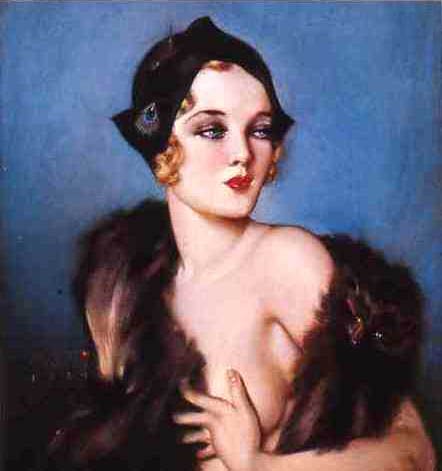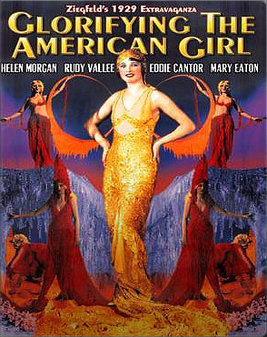|
Alberto VargasDiscover the journey of one of the best pin up artists of all timeWho is Alberto Vargas?  Alberto...also known as Varga was the most famous and prolific pin up artist of all time.  His journey... Vargas was born in February 09, 1896 in Peru. A son of a renowned photographer, Max who taught him how to use an airbrush by the time he was 13 years old. When Alberto Vargas came upon the famous magazine La Vie Parisienne while he was accompanying his father on a trip to Paris, the sensous cover made by Raphael Kirchner made a huge impression on him and because of that, he studied in Zurich and Geneva before he leaves Europe because of the war that is about to arrive on Ellis Island in 1916. When Alberto Vargas first moved to America, he was surrounded by a lunchtime crowd at Broadway. These are women that are smartly-dressed, sophistication and beauty. He was mesmerized by all of these and that is when he decided to spend his life glorifying the American girl. His first job was in Adelson Hat Company and Butterick Patterns where he draws fashion illustrations in watercolor, pen and ink. He then turned into a freelance commercial illutrator and he was painting a store window in May 1919 when a representative from Ziegfeld Follies asked him to show his work the next day to Mr. Ziegfeld himself. That day was the start of everything as he found himself commissioned to paint twelve watercolor portraits of the leading stars of the 1919 Ziegfeld Folliesfor the lobby of the New Amsterdam Theatre.  For the next 12 years, Alberto Vargas painted all the Ziegfeld stars like Billy Burke, Nita Naldi, Marilyn Miller, Ruth Etting, Eddie Cantor, Paulette Goddard and many more stars. He developed a friendship with Ziegfeld who let him call him Ziggy.  When the year 1927 came, he worked for the Paramount Pictures' art department in New York. He was chosen to make original artwork for the film, Glorifying the American Girl which was being produced by Ziegfeld that time. The working atmosphere of extraordinary harmony between all the staff there and himself created an advertising artwork, from general distribution and it also appeared in Paramount's 20th Anniversary Book that was published in 1927 for the company's stars and executives.  Throughout the 1920s, he maintained a full schedule. He worked for a diverse group of clients in addition to the Follies and Paramount. He painted a lot of covers for Tatler and Dance magazines. Alberto Vargas also did hairstyle illustrations for Harper's Bazaar and he also designed some countertop displays for Old Gold cigarettes. Even with his busy schedule, he still found the time to paint his favorite Ziegfeld Follies stars for his own pleasure which includes Shirley Vernon whose 1927 portrait was preserved in his private collection. He married Anne Mae Clift in 1930 and they moved to Hollywood four years later. It seems like their marriage is one added lucky charm to his career because Twentieth Century Fox hired him to paint pastel portraits of their stars and Hellman's Mayonnaise which commissioned a series of full-length movie star portraits for their advertisemnts. When the year of 1935 entered, he was working for Warner Brothers and for MGM. The start of Alberto Vargas pin up career...  Joseph C. Hoover and Sons hired him for his very first calendar jobs that were two pastel glamour pin ups between the year 1937 and 1939. This was also the year when he became an American citizen and the same year when he received an invitation from Esquire magazine to meet with the publisher, David Smart in Chicago to discuss the possibility of working together. He was hired immediately as a replacement for George Petty whose contract was about to expire. He also agreed to drop the “s” from his last name in all his work for the magazine. His first painting was published in the October 1940 issue and after two months, Esquire introduced the first Varga Girl calendar.  For the next five years, he became known worldwide and his work for both in the monthly magazine and the yearly calendar was eagerly awaited. Even though he had a full schedule of work for Esquire during the war years, he usually accommodated special requests from soldiers to paint mascot pin ups. The magazine also allowed him to do a series of patriotic pin ups for William Randolph Hearst's American Weekly magazine. This was the only magazine that Esquire permitted him to do.  While he was working for Esquire magazine, he also painted Hollywood stars. The movie poster he made of Betty Grable in Moon Over Miami in 1941 was a huge success. He also painted a lot of leading ladies including Marilyn Monroe, Loretta Young and Jane Russell. The time came when he had to part ways with Esquire and that was in the year 1946. After the separation, he then embarked on a project to publish his very own yearly calendar. In the meantime, Esquire published their calendar for 1947 that consisted of his unsigned paintings. When his calendar was published in 1948, Esquire had a court order barring the artist from selling or distributing any product bearing the name “Varga” which the magazine had copyrighted. By 1950, there was a court rule that allowed Vargas to sign all his paintings with his full name.  He also took a lot of commerical assignments and he also painted a lot for Playboy magazine. When his wife passed away in 1974, he lost his interest in painting and life. However, he worked on other things like an autobiography with reid Austin and when he painted an album cover that revived his career, Candy-0, for the Cars. He also designed two other record album jackets for singer Bernadette Peters.  |

claim your
free pin up calendar
download it free today

















